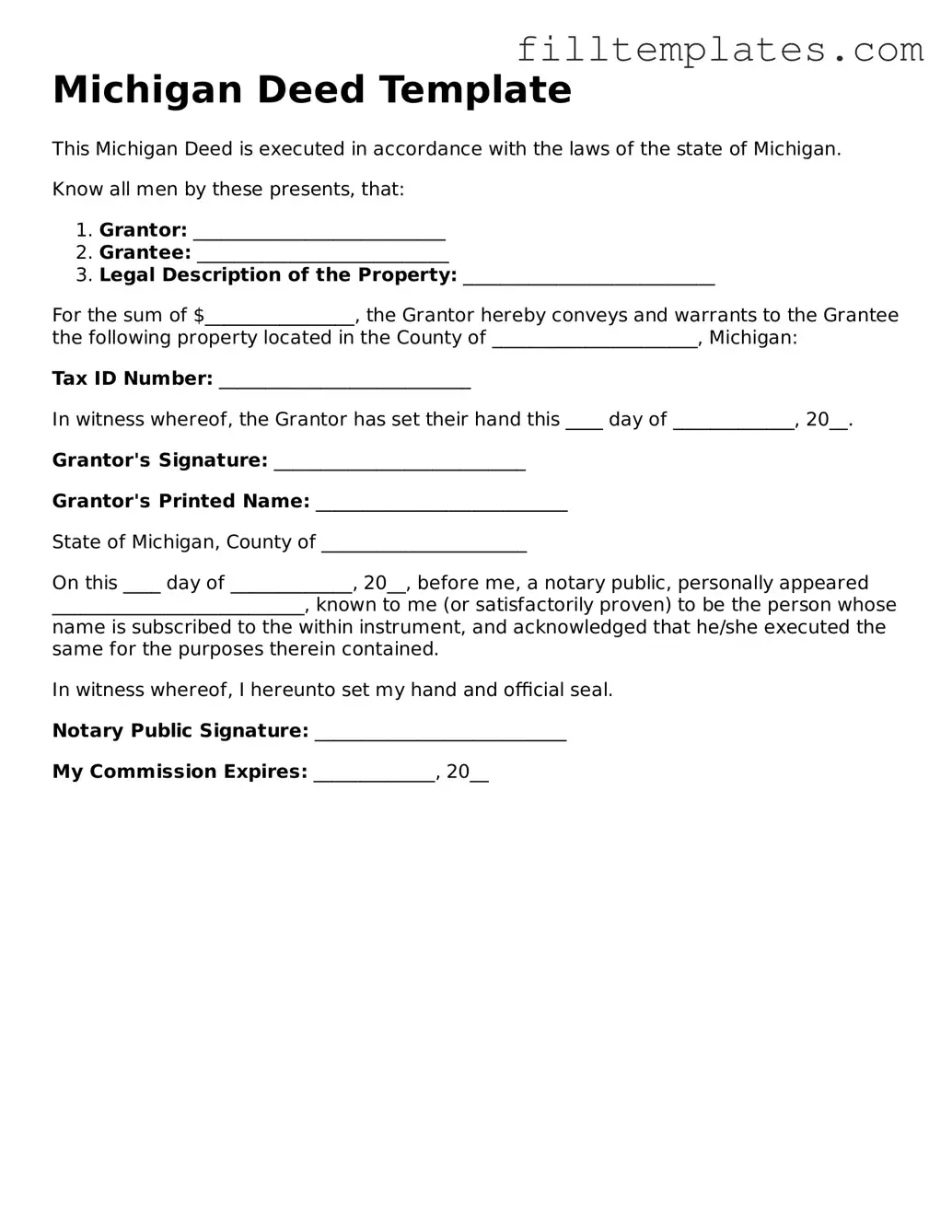Michigan Deed Template
This Michigan Deed is executed in accordance with the laws of the state of Michigan.
Know all men by these presents, that:
- Grantor: ___________________________
- Grantee: ___________________________
- Legal Description of the Property: ___________________________
For the sum of $________________, the Grantor hereby conveys and warrants to the Grantee the following property located in the County of ______________________, Michigan:
Tax ID Number: ___________________________
In witness whereof, the Grantor has set their hand this ____ day of _____________, 20__.
Grantor's Signature: ___________________________
Grantor's Printed Name: ___________________________
State of Michigan, County of ______________________
On this ____ day of _____________, 20__, before me, a notary public, personally appeared ___________________________, known to me (or satisfactorily proven) to be the person whose name is subscribed to the within instrument, and acknowledged that he/she executed the same for the purposes therein contained.
In witness whereof, I hereunto set my hand and official seal.
Notary Public Signature: ___________________________
My Commission Expires: _____________, 20__
